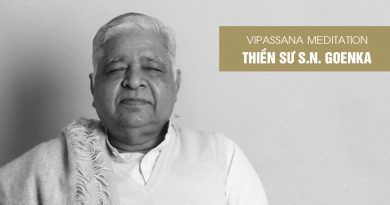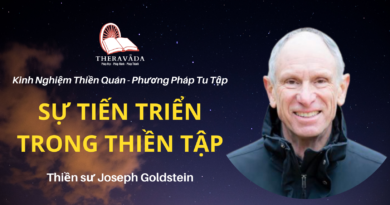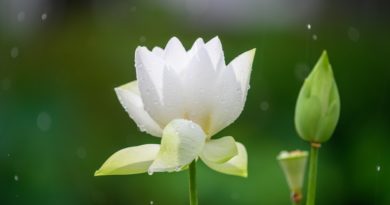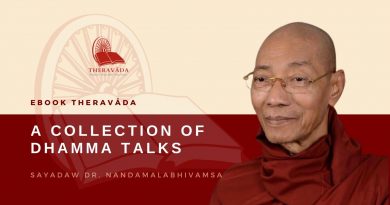Peace Within Oneself, For Peace In The World
MAIN CONTENT
- The Dhamma Jewel returns to India
- The Buddha’s Universal Teachings
- Vipassana – quintessence of the Buddha’s Teachings
- Apparent Reality and Actuality
- Vipassana for Prisoners
- Pure Love and Compassion
- Vipassana – a Powerful tool for social Integration
- Three Ratnas or Triple Gems
- Peace Within, for Peace in the World
(The following is the text of Goenkaji’s Keynote address at the International Bauddha Mahotsav (Buddha Conference) ‘World Unity in Buddha’s Tri-Ratna’, at Sarnath, India on November 6th, 1998)
Venerable Bhikkhu Sangha and friends in Dhamma,
We have all assembled here this morning to discuss ways and means to unite all the devotees of the Buddha in this country and the world – to get ourselves strengthened in the benevolent teachings of the Enlightened One and help the entire humanity to benefit from practising the universal and non-sectarian teaching of the Buddha. These united efforts will help to bring real peace, real harmony and real happiness in this world suffering from sectarian conflicts, communal disharmony and intolerance.
On my return from a three-month long Dhamma journey to East Asian countries, I was pleasantly surprised to learn of the Government of India hosting the present International Celebration. With great happiness, I accepted the kind invitation to deliver the keynote address in this conference.
Indeed, this is a very appropriate time for India to host such a conference. I found during my various Dhamma tours around the world, that more people in many nations are now readily accepting the Buddha’s universal teachings, and there is a growing interest in teachings of the Enlightened One. This means the time has come for those already benefiting from the Buddha’s teachings to work hard, with unity, to enable more and more people to benefit from the teachings.
Such a beneficial conference serves to unite those walking on the Path shown by the Buddha, on a common socio-cultural and spiritual platform. And in a world tossed in storms of suffering and conflict, the teaching of the Buddha shines brightly as brighltly as a benevolent lighthouse guiding those seeking away out of conflict and misery.
If I had been aware, much earlier, that this conference was named as ‘Bauddha Mahotsav’, then I would have suggested that a more appropriate name would be ‘Buddha Mahotsav’, or ‘Dhamma Mahotsav’, or even ‘Tiratana Mahotsav’. This is because in the entire ancient literature of the Buddha’s teachings, commentaries and sub-commentaries, amongst a total of 59,150 pages containing 9,285,755 words, the word ‘Bauddha’ is very conspicuously absent. The Buddha never taught ‘Buddhism’ or ‘Bauddh Dharma’. He never taught a religion, nor did he convert anyone to an organized religion. He taught Dhamma (Dharma) – the universal laws of nature – and inspired people to follow Dhamma.
Those who followed the teachings of the Buddha were never called ‘Bauddh’ (Buddhist) during the time of the Buddha, and even till about 500 years later. Throughout this huge literature, we find only the following words referring to those practicing the Buddha’s teachings: Dhammi (Dharmi), Dhammiko (Dharmika), Dhammattho (Dharmastha), Dhammacari (Dharmacari), Dhammavihari (Dharmavihari), Dhammanusari (Dharmanusari).
We don’t know when, where, by whom and why the use of the word ‘Bauddh’ first began, and so also the use of the words ‘Buddhism’ and ‘Buddhist’. When we say that the teachings of the Buddha are ‘Bauddh Dharama’ (or Buddhism), and say his followers are Bauddh (or Buddhists), obviously it means that the teachings are meant only for people claiming to be ‘Bauddha’ or ‘Buddhists’. Whereas the Buddha declared so emphatically that Dhamma is infinite – “appamano dhammo”.
When the teachings are called Buddhist, or ‘Bauddh Dharma’ or Buddhism, then most of the suffering people of the world will get frightened thinking that they are being converted from one particular religion to another, and be deprived of the universal teaching. But when Buddha’s teachings are given under the original, true nomenclature of ‘Dhamma’, and not any other terminology, then people are reassured of the basic fact that the Buddha’s teachings are not just meant for any one religion. So people from any background will have no hesitation accepting his teachings.
Our research at Igatpuri has shown us that till about 500 years after Buddha, the word ‘Bauddh’ was not found in any ancient spiritual literature of India-the literature in the Buddha tradition, Mahavir tradition, or Vedic tradition. The distinguished scholars assembled here may help us make a proper research as to when usage of this word ‘Bauddh’ began.
It is most important to remember that the Buddha’s teachings are not meant to be limited to any particular sect. His teachings are universal. And if we see the Enlightened One’s teachings in proper perspective, it is clear that the original teachings of the Buddha are totally universal and non-sectarian.
The Dhamma Jewel returns to India
The original teachings, their theory and practice, were lost to India for many centuries. However, they were preserved in the neighbouring countries. We are extremely grateful to the Bhikkhu Sangha in these countries for having carefully preserved the teachings in their pristine purity.
I was very fortunate being born in the neighbouring country Myanmar and coming in contact with the householder saint Sayagyi U Ba Khin, who very compassionately taught me Vipassana-the practical quintessence of the Buddha’s teachings. He also inspired me to read the Buddha’s words in Pali. I am infinitely grateful to him and to the Dhamma land Myanmar for both the theory and practice of the Buddha’s teachings. The Buddha had always emphasized that the theory and practice – pariyati and pattipati – must go together.
My most compassionate Dhamma father Sayagyi U Ba Khin was very eager to pay back the debt of gratitude to India by returning Vipassana as well as the words of the Buddha. As he could not come to India, he persuaded me to go as his representative. Thus in 1969, Vipassana technique as well as the entire available Pali literature returned to India.
Sayagyi U Ba Khin had a great Dhamma conviction in the ancient prediction that, 2500 years after the Buddha, his teachings will return and will be gladly accepted by the intellectuals of the country, and from here once again spread around the world, serving the suffering humanity at large. This prediction has come true.
The Buddha’s Universal Teachings
The universal teachings of the Buddha are the most precious legacy ancient India gave to the world. The teachings are a practical code of conduct, a way of purity and of gracious living. They are a scientific study of the truth pertaining to mind and matter, and the ultimate truth beyond.
In fact, the Buddha should be more appropriately known as a super-scientist who studied the entire laws of nature governing the Universe, by direct personal experience.
The Buddha’s rational teachings are clearly explained in the Eight-fold Noble Path, divided in three divisions of sila (morality), samadhi (mastery over the mind), panna i.e. ‘pragya’ (purification of the mind, by developing insight).
The Buddha very distinctly defines that these three basic teachings are not just his teachings, but the teachings of every enlightened person of the past, present and future. He said: “Etam Buddhana Sasanam”
The three core divisions of the Buddha’s teachings are the essence of every religion and spiritual path. Every religion advises its followers to live a moral life – which means abstaining from performing any unwholesome action, vocal and physical, which will harm, hurt other beings or disturb their peace and harmony. This means abstaining from killing, stealing, sexual misconduct, wrong speech, taking intoxicants.
Followers of every religion accept the principal of morality, but only at the intellectual or at the devotional level. At the actual level, it is very difficult to live a wholesome life of morality unless one works hard to control and purify the mind.
The unique feature of the Buddha’s teachings is that he did not merely give sermons saying: ‘Sabbapapassa akaranam’-abstain from all unwholesome actions – but he also gave the practical technique to help one achieve this.
Therefore, he taught the second part of his teaching i.e. kusalassa upasampada. Performing wholesome actions by ‘kusala cittassa ekaggata’ or concentration of the wholesome mind. Nobody will object to living a life where one is a master and not a slave of one’s mind.
The Buddha explains further: it is not enough to get the mind concentrated, tranquil, and pure at the surface levels. For, so long as the roots of impurities are present at the base of the mind, there is every danger of these deep-rooted impurities arising, multiplying and overpowering one’s entire mental structure. To prevent this, the Buddha gives the third and last stage of his invaluable teaching: ‘sa citta pariyodapanam’ i.e. total purification of one’s mind. To explain, he gives an example of a huge tree being cut, but with its roots left intact. And as long as these roots are there, another tree is bound to come up, sooner or later. Similarly, if the craving is not eradicated at the root level, the misery continues arising again and again. He said: “Yathapi mule anupaddave dalhe chinnopi rukkho punareva ruhati; Evampi tanhanusaye anuhata nibbattati dukkhamidam punappunam”.
Therefore, to get fully liberated from mental defilements, one has to work at the depth of the mind. It is at its roots, that impurities are constantly being created, multiplied and stored.
This enlightened super-scientist called these impurities at the roots of the mind ‘anusaya’, or ‘guhasaya’. To eradicate these, he re-discovered, and then compassionately distributed, a very ancient technique practiced and taught by all the enlightened persons of the past. This technique is Vipassana.
Vipassana – quintessence of the Buddha’s Teachings
Vipassana, the practical quintessence of the teaching of the Buddha, is not merely a theory or philosophy for any kind of intellectual entertainment and philosophical discussion, nor an emotional or devotional game. It is down-to-earth, practical, rational, scientific, non-sectarian and result-oriented. Vipassana can be practiced and is practiced by one and all.
Practicing Vipassana makes one a good human being, enables one to live a peaceful and harmonious life, and helps generate a peaceful and harmonious atmosphere all around oneself for others. Which religion in the world will object to this conversion from disharmony to harmony?
There is nothing objectionable in practicing the technique of concentration of the mind by observing one’s natural, normal respiration, without adding any sectarian verbalization, or any visualization, imagination etc. Which religion can object to observing one’s natural respiration? Respiration is universal. Similarly, nobody objects to purifying one’s mind at the deepest level, by objectively observing the interaction of mind and matter within oneself, at the level of body sensations, which again is universal. The body sensations arise when the mind and matter interact with each other, every moment of one’s life.
By practicing Vipassana, one experiences how the mind and body keep influencing each other. Without experiencing this truth, one continuously reacts to the feeling of bodily sensations created by mind-matter interaction. One also remains ignorant how, at the root level of the mind, one keeps on generating craving towards pleasant sensations and aversion towards unpleasant sensations. This is the defilement of the mind that arises and gives support to its habit pattern at its deepest level. Observing this phenomenon objectively, without reaction, one comes out of the old habit pattern of generating ‘raga’ and ‘dwesha’ (craving and aversion) towards them.
Apparent Reality and Actuality
At the apparent level, it seems one is reacting with craving and aversion to the respective objects of the six sense doors – a colour, shape, or light at the eye sense door, a sound at the ear, a taste at the tongue, a smell at the nose, something tangible at the body sense door, a thought at the mind sense door.
The Buddha discovered reality at the actual level. He found that with contact of sensual objects with the sense doors, i.e. salayatana paccaya phasso, there is a feeling of sensation on the body, i.e. phassa paccaya vedana. And it is to this feeling of sensation within that one is reacting with craving or aversion, i.e. vedana paccaya tanha. This is the reality at the actual level. And the Enlightened One gave the technique of Vipassana that works at this actual level.
Observing the feeling of sensation in the body makes it very obvious that one cannot harm another being without generating a defilement in the mind: one cannot kill a fellow being without generating animosity, one cannot steal without generating greed or craving, one cannot commit rape or adultery without generating lust or passion. And so also one cannot commit any wrong vocal action without generating some defilement in the mind.
Very importantly, Vipassana helps one experience a deeper necessity to be free from every defilement and to maintain perfect sila. Initially, yes, one accepts the need to maintain sila out of concern for others, or concern for the laws of the land. But with Vipassana, one experiences the laws of Dhamma. Just as the benefits of following the laws of Dhamma are here and now, the punishment for breaking the laws of Dhamma is here and now.
The very instant one breaks sila one starts feeling miserable. By generating any defilement like anger, hatred, ill will, animosity etc. one immediately becomes agitated and loses the peace, balance and harmony of one’s mind. The person at whom the defilement is directed is harmed only later. But the first victim is oneself. By experiencing this reality, one realizes the necessity to come out of every defilement of the mind. One starts maintaining perfect sila, for one’s own benefit, to come out of misery.
It is only by direct experience that the teaching of the Enlightened One becomes so clear:
‘Pubbe hanati attanam, paccha hanati so pare’
-Unless one develops the ability to experience the reality within oneself, one keeps on generating defilement after defilement, and harming oneself. With Vipassana, one breaks the habit pattern of the mind to generate defilements at the root level of the mind. The roots of defilement are cut. There comes a time when that tree of defilement cannot grow again.
The Buddha made another invaluable discovery. He found that anything arising in the mind, starts flowing with the feeling of sensation in the body: Vedana Samosarana Sabbe Dhamma
Those who are slaves of the habit pattern of generating misery – by generating anger, or passion, or ego etc. – learn how to eliminate this misery by observing the feeling of sensation in the body, at the very moment a defilement arises in the mind. Similarly, people suffering from feelings of depression, fear, insecurity, inferiority complex etc. also easily come out of all these complexes by objectively observing the feeling of sensations in the body, when such defilements arise.
A large number of people also take Vipassana courses to come out of addictions to different intoxicants. They very soon understand that their actual addiction is not towards the intoxicant, but to the sensation that one feels in the body by taking the intoxicant. By the practice of Vipassana, they learn not to react to body sensations, but to observe it objectively, with perfect equanimity, perfect equilibrium of the mind. Thus, the habit pattern of the mind starts getting broken and one comes out of any addiction easily.
Vipassana for Prisoners
Experiencing the reality within has helped many thousands suffering within prisons. Now, many prisons in India are organizing Vipassana courses for their inmates, as a reform measure. Prisons in other countries like the USA and the UK too have started introducing Vipassana. Many prison officials across the country now realize that Vipassana spreading in society will help prevent crime. Prevention is no doubt better than cure.
Actually, not only the inmates of prisons, but everyone outside the four walls of a prison are also prisoners – prisoners of the unwholesome habit pattern of their own mind. This prison of defilement causes more misery than the prison of walls and guards. Vipassana enables everyone to be free from this prison of the impure mind, and be free from misery, to experience real happiness, real freedom, and real liberation.
Pure Love and Compassion
A highly pure mind naturally generates ‘maitri’ and ‘karuna’, love and compassion for others. ‘Maitri’ and ‘karuna’ must be generated from the deeper level of a pure mind. Otherwise it will only be superficial and not effective.
How can an impure mind which is a storehouse of anger, hatred, ill will, animosity etc. generate real love and compassion, ‘maitri’ and ‘karuna’? To demolish this storehouse of impurities, the Enlightened One gave the technique of Vipassana, the continued practice of which helps the mind become progressively pure. Such a purer mind naturally begins getting filled with the qualities of ‘maitri’ and ‘karuna’, love and compassion. That is why, at the end of a Vipassana course, students are taught the technique of Metta Bhavana – how to use the purer mind to generate metta, the tangible vibrations of goodwill and compassion for others. And metta becomes stronger as the mind becomes purer.
In Buddha’s teaching, man matters most; when we talk of man, mind matters most; when we talk of mind, purity matters most so that it can generate pure love and compassion. Purity of mind can be achieved only when impurities are removed from the root level of the mind (anusaya). It is this root of the mind (anusaya) which generates and multiplies impurities. And if this habit pattern is not changed, the impure mind is not changed; and if the impure mind is not changed, the individual is not changed; and if the individual is not changed, the society, the world is not changed. So Buddha strikes at the root cause of misery, which is the very foundation of the problem. To demolish this impure foundation, he gave the powerful tool of Vipassana.
Like tributaries joining the river, the Buddha’s teachings are the practical conjunction (triveni) of sila, samadhi, and panna, all of which are universal and non-sectarian. That is why, at the time of the Buddha and even now, people from various sects, traditions, countries and cultures willingly practice his teachings and enjoy the same benefits.
The Buddha’s teaching is never a Utopian dream of hollow idealism, but it is a great unifying force in our strife-torn society. This has already been proved in the last 30 years, by how people and leaders belonging to different religions, castes, different communities, different classes of society and people from different countries, cultures, join Vipassana courses in such large numbers. They meditate together and eat together without having any difference of the so-called high or low ‘status’.
Nor can one accept the wrong social tradition of untouchability. This is the teaching of the Buddha in practice. And this equality is the very ancient and highest spiritual culture of this country, which tragically deteriorated down the passage of time. Now it is so joyful to see this equality and integration arising again, not merely at the level of principles, but at the actual level. A true practitioner of the Buddha’s teachings cannot and will not discriminate against any human being.
It is noteworthy, that to date, approximately 2,000 Christian priests and nuns, 500 Jain munis and sadhvis, hundreds of Hindu and Buddhist monks and nuns have participated in Vipassana courses. Ordinary householders of these traditions number in hundreds of thousands. This number is multiplying every year.
The non-sectarian, scientific teachings of the Buddha spreading on a mass scale are a concrete, practical method to achieve social integrity. This is because, as one progressively experiences the teaching of the Enlightened One, it becomes impossible to believe in the differences of caste, community, sect, gender, social status etc. Nor can one accept the wrong tradition of untouchability.
Three Ratnas or Triple Gems
In this important seminar, I would also like to make a few clarifications about the Three Ratnas or Triple Gems. At the beginning of a Vipassana course, every student, irrespective of his background, takes refuge in the Triple Gems.
What are the Triple Gems? One says, ‘I take refuge in the Buddha; I take refuge in Dhamma; I take refuge in the Sangha’. As time passed, taking refuge in these Three Ratnas was wrongly considered as getting converted from one organized religion to another organized religion. But when understood in its proper perspective, in its original meaning, then not only ordinary people, but also priests, nuns, leaders of different religions have shown no hesitation in taking refuge in the Triple Gems.
The Buddha has so clearly and unambiguously explained the meaning of the Three Ratnas as Dhamma qualities, when he said:
“Idampi Buddhe ratanam panitam,
Idampi Dhamme ratanam panitam,
Idampi Sanghe ratanam panitam.”
He explains the Triple Gems as virtuous qualities in each of them. And one is taking refuge in these qualities, and not in the person or persons.
The real teaching of the Enlightened One does not want anybody to take refuge in Gotama, the Buddha, nor to take refuge in ‘Buddhist’ Dhamma’, nor in ‘Buddhist Sangha’. When we take away these confusing prefixes from these words and understand the real meaning of the Three Ratnas, it becomes acceptable to one and all. This is because, when one takes refuge in a Ratna, one takes refuge not in a person, but in the virtuous quality of that person for getting inspiration to develop those very qualities within oneself.
When one takes refuge in Buddha Ratna, one takes refuge in the qualities of the Buddha, which is enlightenment. And this enlightenment is not limited to a particular sect or community. Everyone has the seed of enlightenment within oneself, but one has to work very hard, for many lives, to gradually develop and get fully enlightened. Full enlightenment is not the monopoly of only Siddhartha Gotama. He repeatedly said there were many Buddhas before and there will be many Buddhas after him.
Similarly, when one takes refuge in Dhamma Ratna, one is taking refuge in the quality of the universal Dhamma, i.e., sila (morality), samadhi (mastery over the mind) and panna (purificaiton of the mind by one’s insight).
So also, when one takes refuge in the Sangha Ratna, one actually takes refuge in the quality of the Sangha. Anyone who has walked on the path of Dhamma, has purified the mind, liberated oneself from all the mental defilements, keeps on generating love and compassion. Such a saintly person is Sangha; one may belong to any ‘caste’, community, country, gender, it makes no difference. One gets inspiration from any such pure-minded person from whom one feels the confidence of getting guidance for one’s own liberation, and work hard to get established in the right path.
So, taking refuge in the Triple Gem actually means taking refuge in the universal qualities of Dhamma. This is what the Buddha emphasized again and again. Verily, Buddha is Buddha because of Dhamma. Sangha is Sangha because of Dhamma. Therefore, Dhamma is the highest in the world – Dhammo hi settho janetasmim. And again and again he gave importance to taking refuge in Dhamma. Taking refuge in Dhamma, means the Dhamma within oneself – “Dhareti’ti Dhammo”. This is the real refuge, real shelter, a real island where one can shelter one’s boat in any turbulent storm – Attadipa viharatha, attasarana, anannasarana Dhamma dipa dhammasarana anannasarana
The Buddha stressed that Dhamma developed within oneself should be one’s own shelter, and emphatically declared (na anna saranam) – no refuge in anyone else. He said one is one’s own master (“atta hi attano natho”), one makes one’s future oneself (atta hi attano gati); and then he emphatically says you have to work out your own salvation (“tumhe hi kiccam attappam“), and the Enlightened Ones only show the true Path (“akkhataro Tathagata” ). One has to make every effort to walk on the Path.
So taking refugee in Three Ratnas is not a sectarian rite or ritual, as is well understood by Vipassana meditators. This helps to free people from sectarian bondages and dogma, and helps them live a life of Dhamma, a life which every religion actually wants one to.
Peace Within, for Peace in the World
We find that every tradition and the teachings of saints urges people to live a moral life, with a disciplined, pure mind full of love and compassion for all beings. The universal Dhamma can be practiced by everyone, giving the same beneficial results to everyone. But as time passes, and the true teachings of pure Dhamma gets entangled in sectarian rites, rituals, beliefs, dogmas, cults etc., we find that in the practical, everyday life of people, the pure Dhamma becomes insignificant and all other things mentioned earlier become very predominant. And this creates difficulties because rites, rituals etc. are different in different organized religions. And when all the emphasis is given to these superficial husks or the shell, then they miss the grain or the substance.
The substance is developing morality, mastery over the mind, purity of the mind. There can be no conflict over these three basic factors necessary to live a beneficial life. And one has to give importance to the substance, instead of the shell.
Buddha’s teaching wants us to realize that the real substance of Dhamma is to actually apply sila, samadhi, panna in one’s life. These universal factors are the greatest and most common denominators of every religion. Focussing attention on these universal factors needed in everyone’s life will help dissolve the superficial differences amongst communities. And it is these superficial differences that cause so much of friction, hostility and ill will between one community and another.
The teachings of the Enlightened One helps one ignore these superficial differences between one another. For instance, different schools in the tradition of the Buddha like the Theravada, Mahayana, Vajrayana, Tantrayana etc. may have their differences, but there is no conflict amongst them. They all give equal importance to the essence of the Buddha’s teachings. And leaders and followers of these differing schools willingly take Vipassana courses where the practice of sila, samadhi, panna and ‘Maitri Bhavana’ is taught.
Similarly, people from every religion have started giving more importance to the common meeting point of all religions, i.e. sila, samadhi, panna – which is the essence of the universal teachings of all the enlightened ones, acceptable by all. As Vipassana spreads, I am sure that this Dhamma wish will materialize and prevent conflict, quarrels, even wars in the name of religion.
I hope this seminar will help more and more people benefit from the true, practical teachings of the Buddha – which is the timeless, priceless spiritual heritage of the ancient civilization of India, and equally relevant even today.
History has proved that whenever the teachings of sila, samadhi, panna have gone from India to neighbouring countries, the teachings have never clashed with that nation’s traditional culture. On the other hand, like sugar dissolving in milk, the teachings have been gently assimilated to sweeten and enhance that society.
May the true teachings of the Enlightened One spread in every nook and corner of the world. May more and more of humanity make use of this invaluable teaching, and make use of this invaluable human life to come out of all miseries, all suffering, all ignorance, and develop the wisdom that comes only from purifying the mind, and experiencing peace within. That experiential wisdom and peace within each individual is what can bring more peace in society, and peace amongst nations.
May all beings be happy! Be peaceful! Be liberated!
Bhavatu sabba mangalam
Source: https://www.vridhamma.org






